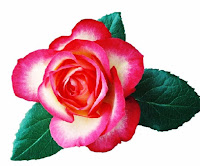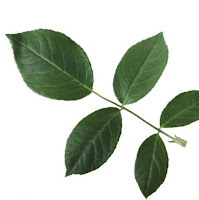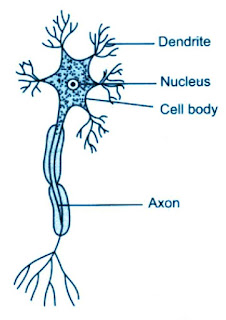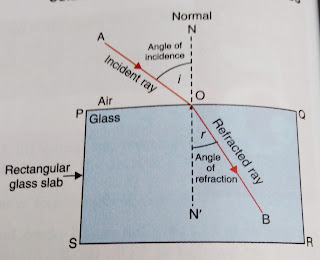NCERT Solution of Science Class 6 :Ch 7- Getting to Know Plants
Discussed NCERT solution of class 6 subject science of chapter 7 named Getting to Know Plants along with questions ,answers ,notes, PDF.
Question 1:
Correct the following statements and rewrite them in your notebook.
(a) Stem absorbs water and minerals from the soil.
(b) Leaves hold the plant upright.
(c) Roots conduct water to the leaves.
(d) The number of petals and sepals in a flower is always equal.
(e) If the sepals of a flower are joined together, its petals are also joined together.
(f) If the petals of a flower are joined together, then the pistil is joined to the petal.
Answer 1:
(a) Roots absorbs water and minerals from the soil.
(b) Stem hold the plant upright.
(c) Stem conduct water to the leaves.
(d) The number of petals and sepals in a flower is not always equal.
(e) If the sepals of a flower are joined together, its petals are separate and not joined together.
(f) If the petals of a flower are joined together, then the pistil is not necessarily joined to the petal
Question 2:
Draw (a) a leaf, (b) a taproot and (c) a flower, you have studied for Table 7.3.
Answer 2:
Question 3:
Can you find a plant in your house or in your neighborhood, which has a long but a weak stem? Write its name. In which category would you classify it?
Answer 3:
Brittle Plant has a ling but weak stem. It is a climber.
Question 4:
What is the function of a stem in a plant?
Answer 4:
Functions of stem in a plant:
(i) stem bares the branches, leaves, flowers and fruits of a plant.
(ii) The stem helps to transports water and minerals from roots to the leaves.
(iii) The stem helps to transports the prepared food from leaves to other parts of the plant.
Question 1:
Correct the following statements and rewrite them in your notebook.
(a) Stem absorbs water and minerals from the soil.
(b) Leaves hold the plant upright.
(c) Roots conduct water to the leaves.
(d) The number of petals and sepals in a flower is always equal.
(e) If the sepals of a flower are joined together, its petals are also joined together.
(f) If the petals of a flower are joined together, then the pistil is joined to the petal.
Answer 1:
(a) Roots absorbs water and minerals from the soil.
(b) Stem hold the plant upright.
(c) Stem conduct water to the leaves.
(d) The number of petals and sepals in a flower is not always equal.
(e) If the sepals of a flower are joined together, its petals are separate and not joined together.
(f) If the petals of a flower are joined together, then the pistil is not necessarily joined to the petal
Question 2:
Draw (a) a leaf, (b) a taproot and (c) a flower, you have studied for Table 7.3.
Answer 2:
 |
| Flower |
 |
| Leaf |
 |
| Root |
Question 3:
Can you find a plant in your house or in your neighborhood, which has a long but a weak stem? Write its name. In which category would you classify it?
Answer 3:
Brittle Plant has a ling but weak stem. It is a climber.
Question 4:
What is the function of a stem in a plant?
Answer 4:
Functions of stem in a plant:
(i) stem bares the branches, leaves, flowers and fruits of a plant.
(ii) The stem helps to transports water and minerals from roots to the leaves.
(iii) The stem helps to transports the prepared food from leaves to other parts of the plant.
NCERT Solution of Science Class 6 :Ch 7- Getting to Know Plants
Question 5:
Which of the following leaves have reticulate venation?Wheat, tulsi, maize, grass, coriander (dhania), China rose
Answer 5:
Tulsi, Coriander (Dhania) and China rosehave reticulate venation.
Question 6:
If a plant has fibrous root, what type of venation do its leaves likely to have?
Answer 6:
If a plant has fibrous root then it has parallel venation.
Question 7:
If a plant has leaves with reticulate venation, what kind of roots will it have?
Answer 7:
If a plant has leaves with reticulate venation then it has tap root.
Question 8:
Is it possible for you to recognize the leaves without seeing them? How?
Answer 8:
Yes, it is possible to recognise the leaves without seeing the leaves.
For example, if a plant has taproot then it has reticulate venation and if a plant has fibrous root then it has parallel venation.
Question 9:
Write the names of the parts of a flower.
Answer 9:
The different parts of a flower are sepals, petals, stamens and pistil.
Question 10:
Which of the following plants have you seen? Of those that you have seen, which one have flowers?
Grass, maize, wheat, chilli, tomato, tulsi, pipal, shisham, banyan, mango, jamun, guava, pomegranate, papaya, banana, lemon, sugarcane, potato, groundnut
Answer 10:
We have seen the following plants:
Grass, maize, wheat, chilli, tomato, tulsi, pipal, banyan, mango, jamun, guava, papaya, banana, lemon, sugarcane, potato.
The flowering plants that we see:
Maize, wheat, chilli, tomato, tulsi, pipal, banyan, mango, jamun, guava,papaya, banana, lemon, potato.
Question 11:
Name the part of the plant which produces its food. Name this process.
Answer 11:
Green Leaves produce food for the plant by the process of photosynthesis.
Question 12:
In which part of a flower, you are likely to find the ovary?
Answer 12:
We found ovary in pistil.
Question 13:
Name two flowers, each with joined and separated sepals.
Answer 13:
Plants with joined sepals : Chains rose and cotton.
Plants with separated sepals : Rose and jasmine.
You May Also Like:
NCERT Solution of Science Class 6 :Ch 7- Getting to Know Plants

